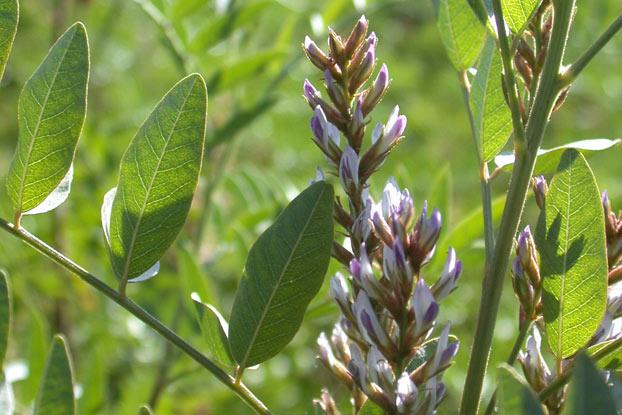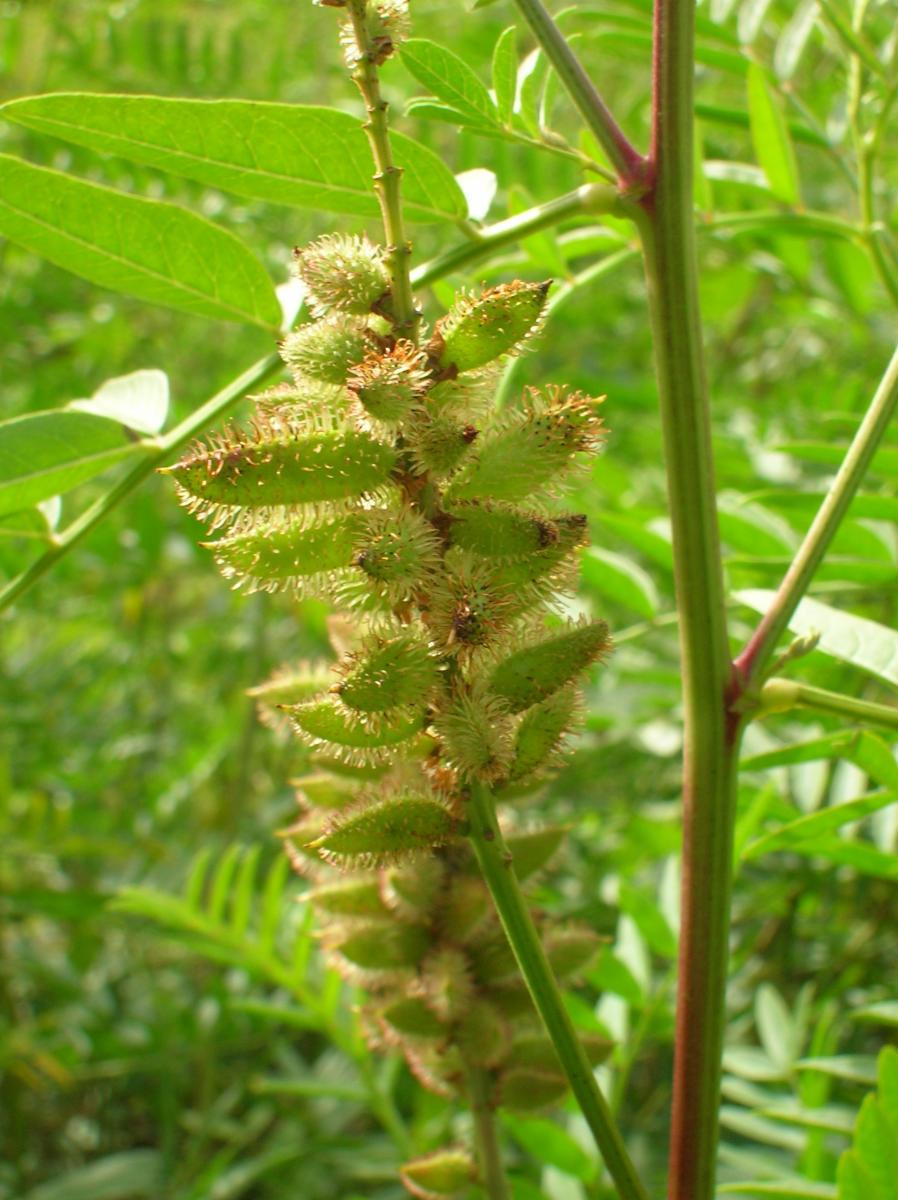Licorice
glycyrrhiza glabra
Also known as: ["Sweet Wood","liquorice"]
Overview
A perennial herbaceous plant native to parts of Europe and Asia, known for its sweet-tasting roots used in confectionery and traditional medicine.
Benefits & Perks
["medicinal use","culinary herb","aesthetic foliage"]
Botanical Classification
| Phylum: | Magnoliophyta |
| Class: | Magnoliopsida |
| Order: | Fabales |
| Family: | Fabaceae |
| Genus: | Glycyrrhiza |
| Botanical Name: | Glycyrrhiza glabra |
Plant Characteristics
Basic Information
- Category: Herbs & Weeds
- Suitable Location: garden bed in full sun, or container with ample space for root development
- Suitable For:
- Is Weed: No
- Allergenicity: low
Environmental Needs
- Climate: {"temperatureRange":"10–35°C"}
- Hardiness: {"zones":"6–9"}
- Misting: rarely required, only if ambient humidity is very low
- Drainage: Fast-draining to prevent waterlogging.
- Soil Type: Well-draining, loamy soil with organic matter; can tolerate poor soils.
Maintenance Level
- Maintenance Level: moderate
- Toughness Level: moderate
- Pruning Frequency: Annually in late winter or early spring; light pruning can be done as needed.
- Pruning Intensity: Moderate; remove up to one-third of growth if needed for shaping.
Care Details
Ideal Sunlight Coverage:
Full sun (6–8 hours/day); tolerates partial shade in hot climates.
Sunlight Tolerance Tips:
Acclimate gradually to intense sunlight; protect from harsh afternoon sun; adjust placement based on seasonal light changes.
Care Requirements
Care Difficulty
moderatemoderate
Sunlight
full sun to partial shade
Rotate plant for even growth; use sheer curtains in intense sun; move outdoors in spring/summer.
Watering
every 7–10 days during active growth, less frequently in winter
Water thoroughly but infrequently; ensure soil dries between waterings; avoid overwatering.
Soil
well-drained, loamy soil with moderate organic content
pH: Slightly acidic to neutral (pH 6.0–7.0).
Ensure good drainage; avoid heavy clay soils; amend with organic matter for nutrients.
Temperature
Prefers 65–85°F (18–29°C); tolerates mild frosts but thrives in warm conditions.
Avoid sudden temperature shifts; protect from drafts; maintain consistent warmth.
Fertilizing
every 4–6 weeks during growing season with balanced liquid fertilizer
Apply fertilizer after watering; stop in fall/winter; flush soil occasionally to prevent buildup.
Propagation
Methods
Stem cuttings or division; stem cuttings are more common for home growers.
Step-by-Step Propagation Guide
- Take a 4–6 inch cutting.
- Remove lower leaves.
- Dip in hormone (optional).
- Plant in medium.
- Keep moist.
Best Time: Spring or early summer when the plant is actively growing.
Environment
Warm, humid environment with indirect light; maintain consistent moisture.
Medium
Well-draining potting mix with perlite or sand; can also root in water.
Hormone
Rooting hormone is optional but recommended for faster rooting.
Timeline
Roots develop in 3–6 weeks; new growth appears in 2–4 months.
Tools Needed
Pruning shears, rooting hormone, small pots, well-draining mix.
Quick Tips
Use healthy, non-flowering stems; keep cuttings out of direct sun; maintain humidity with a plastic bag.
Pruning & Repotting
Pruning Guide
Method
Use clean cuts just above a leaf node or bud; thin out crowded stems.
Pruning Plan
Prune to maintain shape, encourage bushiness, and remove dead or diseased growth.
Tools
Pruning shears, sterilizing solution, gloves.
Checklist
Sterilize tools; prune dead/damaged growth; shape plant; clean up debris.
Repotting Guide
Best Season
Spring, before new growth begins.
Pot Size
Choose a pot 1–2 inches larger in diameter than the current one.
Method
Remove plant gently; trim roots if necessary; place in new pot with fresh soil; water lightly.
Suggestions
Repot every 2–3 years or when roots fill the pot; beneficial for growth and health.
Checklist
Check root bound status; prepare new pot; use fresh soil; water after repotting.
Advanced Care Tips
Watering Mastery
Watering Checklist
Check soil moisture; water deeply; ensure drainage; adjust for season.
How to Apply Water Properly
Water at the base of the plant, ensuring moisture reaches the root zone; allow excess water to drain away; water early in the day to minimize evaporation.
Watering Schedule Tips
Water deeply once the top inch of soil is dry; reduce frequency in winter to prevent root rot.
Soil Improvement
Add compost or aged manure for fertility; mix sand or perlite for drainage.
Temperature Stress Management
Signs of Temperature Issues
Wilting, yellowing leaves, stunted growth, or leaf drop.
Cold Stress
Slows growth, may cause leaf drop or dieback in prolonged cold.
Solution: Provide frost protection; move indoors in cold weather; ensure good air circulation.
Hot Stress
Leaf scorch, wilting, or reduced vigor in extreme heat.
Solution: Provide shade during peak heat; increase watering; use mulch to retain soil moisture.
Fertilizing Guide
Fertilizing Checklist
Check season; dilute fertilizer; apply to moist soil; avoid contact with roots.
Fertilizing Method
Use balanced liquid fertilizer diluted to half strength every 4–6 weeks during growing season; avoid fertilizing in winter.
Common Problems & Solutions
Toxicity Warning
Cats
Slightly ToxicLicorice is slightly toxic to cats when consumed in large amounts. The glycyrrhizin in licorice can disrupt electrolyte balance and cause gastrointestinal distress in felines.
⚠️ Symptoms:
🌿 Toxic Parts:
⚡ Toxic If:
if eaten in large quantities
Dogs
Slightly ToxicWhile licorice is not highly toxic to dogs, large quantities can cause gastrointestinal upset and may lead to electrolyte imbalances similar to those in humans, particularly due to the glycyrrhizin content.
⚠️ Symptoms:
🌿 Toxic Parts:
⚡ Toxic If:
if eaten in large quantities
Humans
Non-toxicGlycyrrhiza glabra, commonly known as licorice, is generally considered non-toxic for humans when consumed in moderation. However, excessive intake can lead to physiological effects such as increased blood pressure and electrolyte imbalances due to the compound glycyrrhizin.
⚠️ Symptoms:
🌿 Toxic Parts:
⚡ Toxic If:
if consumed in excessive amounts
Frequently Asked Questions
Q: Is licorice root safe for human consumption?
A: Licorice root is generally safe in small amounts but can cause side effects like high blood pressure if consumed excessively.
Q: Can licorice be grown indoors?
A: Licorice can be grown indoors with sufficient sunlight and proper care, though it thrives better outdoors.
Q: Does licorice attract wildlife?
A: Licorice plants can attract certain pollinators, but they are not typically known for attracting larger wildlife.
Quick Reference
| Family: | Fabaceae |
| Care: | moderate |
| Light: | full sun to partial shade |
| Water: | every 7–10 days during activ |
Get Expert Care Tips
Download the Plantious app for personalized care reminders and plant identification!
Google Play App Store








